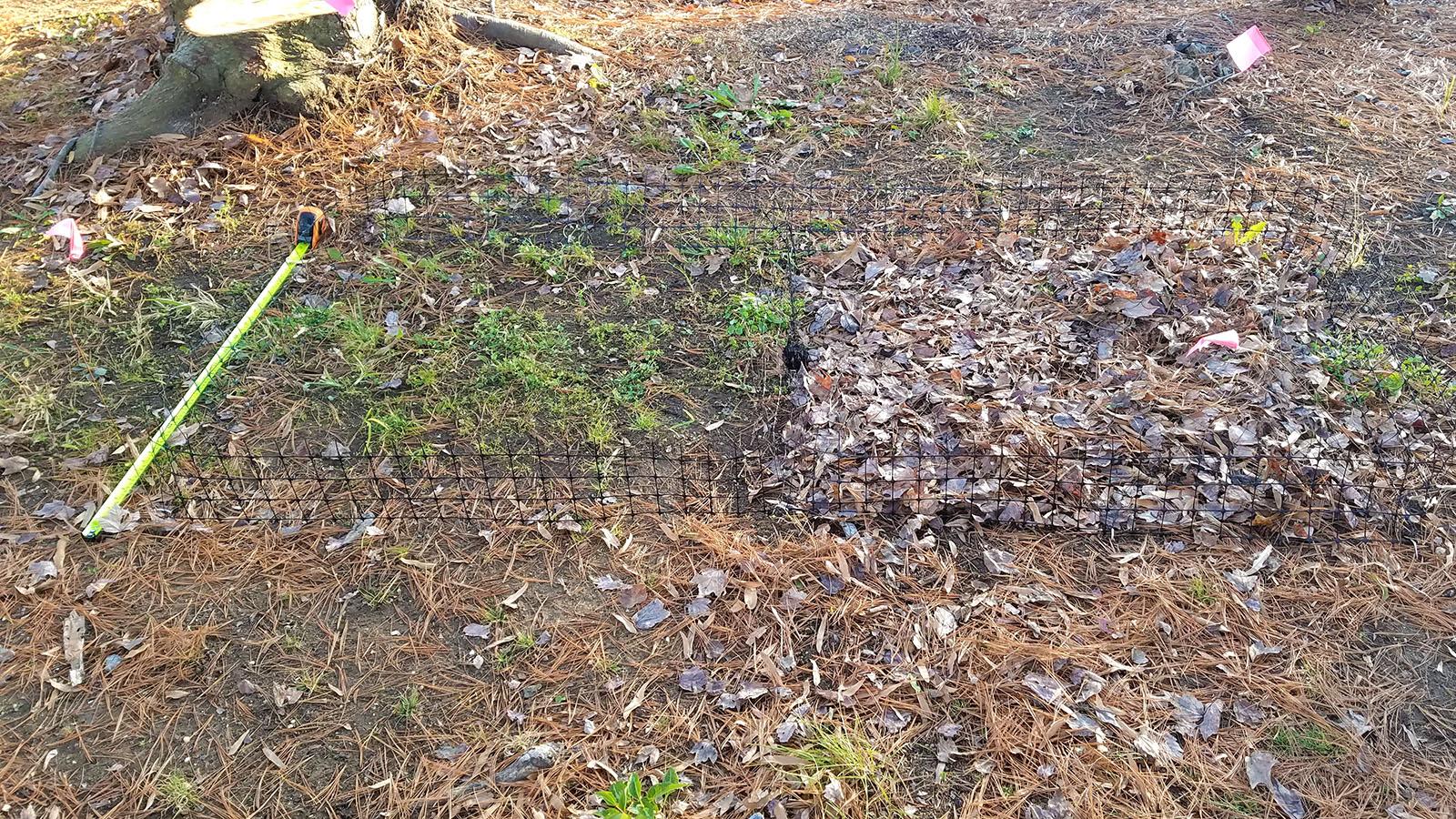UMD Study Reveals the Costs of Years of Removing Leaves on Soil Health
Image Credit: Nicolas M. Perrault via Wikimedia Commons
By now, most people probably know that driving less and using energy efficient appliances reduces carbon dioxide emissions, and that carbon dioxide is one of the major greenhouse gases causing global warming.
But very few people realize they can personally help pull carbon out of the environment and lock it in place so it can’t turn into carbon dioxide They can’t do it themselves, but their yards can, supported by landscaping decisions that directly influence how much carbon their yard can store.
A recent study by University of Maryland researcher Max Ferlauto found that in places where people historically have left their fallen leaves to decompose, without removing them, the soil holds up to 32% more carbon on average. That may seem like a drop in the bucket, but if every lawn adds a drop, the bucket fills quickly. The EPA estimates that 35 million tons of grass clippings and fallen leaves are removed annually from urban and suburban landscapes. Scientists have estimated that in Minneapolis, MN, 11% of residential carbon output is due to yard waste removal, and in Boston, MA, about half the carbon that falls to the ground as leaves is removed from the city.
Ferlauto is a PhD candidate in the Department of Entomology, and he was studying how removing fallen leaves affects insects during the winter months, when he began to wonder about soil carbon.
“Soil is one of the main ways the earth stores carbon,” Ferlauto said, “But there hadn’t been any studies looking at the effect of removing fallen leaves on soil carbon function in suburban yards and urban areas. What we show in this study is that removing leaves reduces both the carbon and the nutrients in the soil, and that changes the ability of the soil to perform fundamental ecosystem functions.”
Carbon is essential for healthy soil. It provides structure, makes the soil more fertile and enables it to hold more water during storms, decreasing runoff. Soils depleted of carbon need more chemical fertilizers and more frequent watering to support a green lawn. And when it rains, more of the rainwater runs off into nearby waterways, carrying those chemicals with it.
One of the study's key findings was that changing lawn management practices to leave fallen leaves on previously raked lawns for two years was insufficient to restore depleted soils.
“In these suburban areas, removing leaves over years and years, we’ve really done some damage to the soils, and it’s going to take time to restore them,” Ferlauto said.

To conduct the study, which was published in the journal Plants People Planet, Ferlauto set up test plots in 13 suburban yards between Washington, DC, and Baltimore, MD. In each yard, he marked off a two-meter by one-meter plot in an area that had been cleared of leaves for many years, and a similar plot where leaves had been allowed to accumulate, such as behind a shed or along a tree line.
Ferlauto and his team divided each plot in half with mesh, and in the fall, they cleared fallen leaves from just one half. In the spring, they analyzed the soils in each plot, repeating the experiment for two years.
The researchers found that within each test plot, the cleared and uncleared halves showed no measurable difference in either soil carbon or the decomposition rates of the leaves. But there was a big difference between test plots in different locations of the yard. Areas where fallen leaves had been regularly left to accumulate had 21% faster decomposition rates, and up to 32% more soil organic carbon compared to areas where leaves were regularly removed.
Ferlauto suggests that people who want to improve soil carbon and the health of their yard’s ecosystem should consider the purpose of having a lawn. If you have children and pets who use the back yard, maybe cleaning up fallen leaves makes sense. But people who don’t use their yards much may consider clearing only the front yard, or even rewilding their lawns, turning green space into meadow or a more natural forest floor environment with native understory plants such as ferns and other species adapted to grow in areas with a leaf layer.
Acknowledging that not everyone can or wants to leave fallen leaves on the majority of their lawn, Ferlauto says that shouldn’t discourage people from finding spaces to intentionally let leaves lie, like along fence lines or tree lines, or even moving leaves from lawn areas into garden beds or beneath trees.
“That’s a good place to start,” Ferlauto said. “I’m a big advocate of ‘do what you can, where you can.’ It doesn’t have to be all or nothing.”
After all, every little bit helps fill the bucket.
-------
The research paper, "Legacy effects of long-term autumn leaf litter removal slow decomposition rates and reduce soil carbon in suburban yards," was published February 22, 2024, in the journal Plants, People, Planet.
Co-authors of the paper included Assistant Professor Karin Burghardt and post doctoral associate Lauren Schmitt, both in the Department of Entomology at UMD.
This research was supported by USDA NIFA Award No. 20217000635473 and a National Science Foundation Graduate Research Fellowship, Grant No. 1840340. This story does not necessarily reflect the opinions of these organizations.